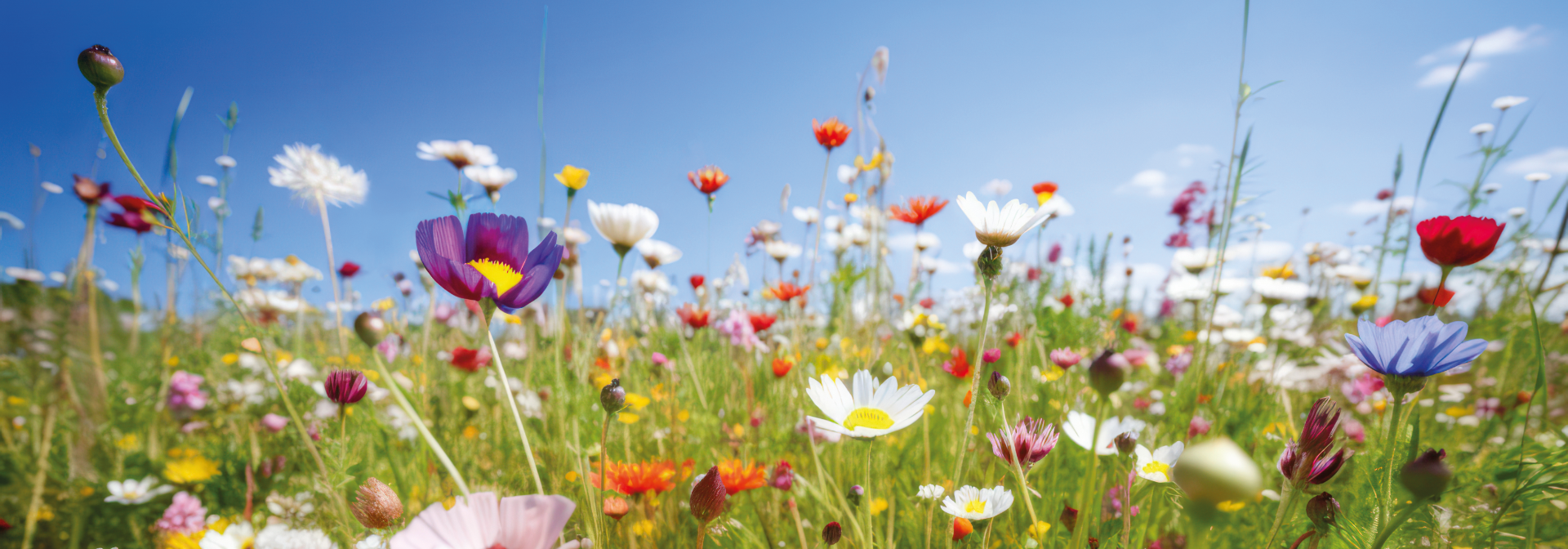OUR HEART PROJECT Green Up with Peter
ISS-DAS-BUNT: FLOWERING MEADOWS
FOR YOUR BURGER ENJOYMENT
Your appetite for burgers makes flower meadows grow: With our ISS-DAS-BUNT campaign, we plant five square meters of valuable flower meadows for every vegan and vegetarian burger that comes out of our kitchen. Since 2021, we have been able to plant 1,878,215 square meters of flower meadows in Mecklenburg-Western Pomerania.
This year, too, we want to make the world even more colorful with your help. Enjoy our delicious meatless burgers in May and June and help create natural habitats for butterflies, wild bees and many insect species.
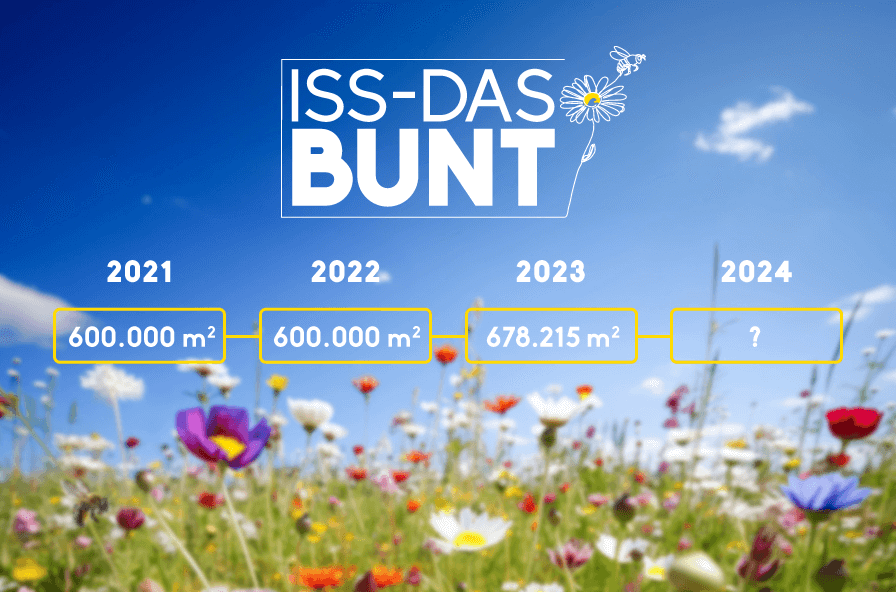
In 2021 and 2022 we sowed 600,000 m2 of flowering meadow each year, and in 2023 it was already 678,215 m2. In total, we have reclaimed an area of almost 1.9 square kilometers for nature: habitat for wild bees, bumblebees, insects, but also small animals and birds.
Imagine 263 football fields in full bloom! Let’s set a new annual record together in 2024!
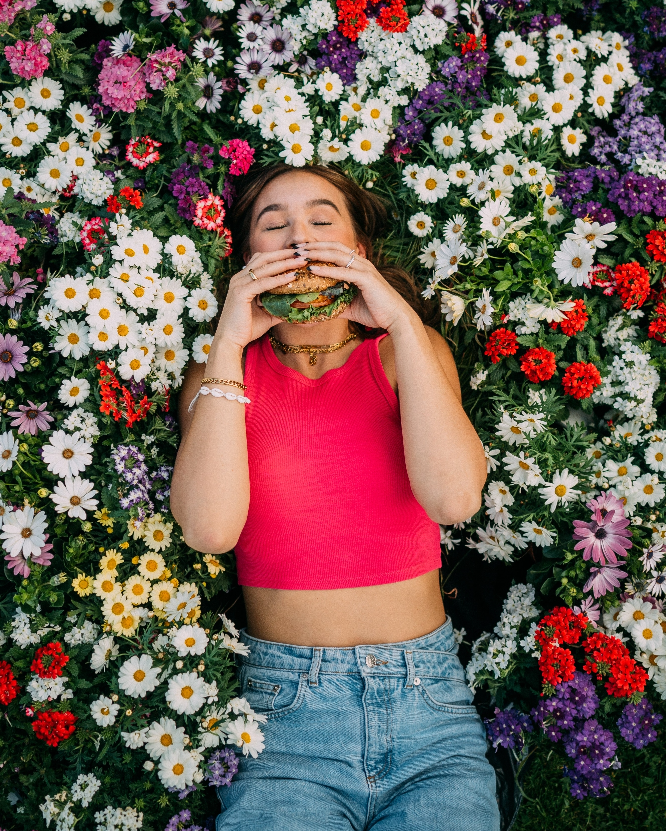
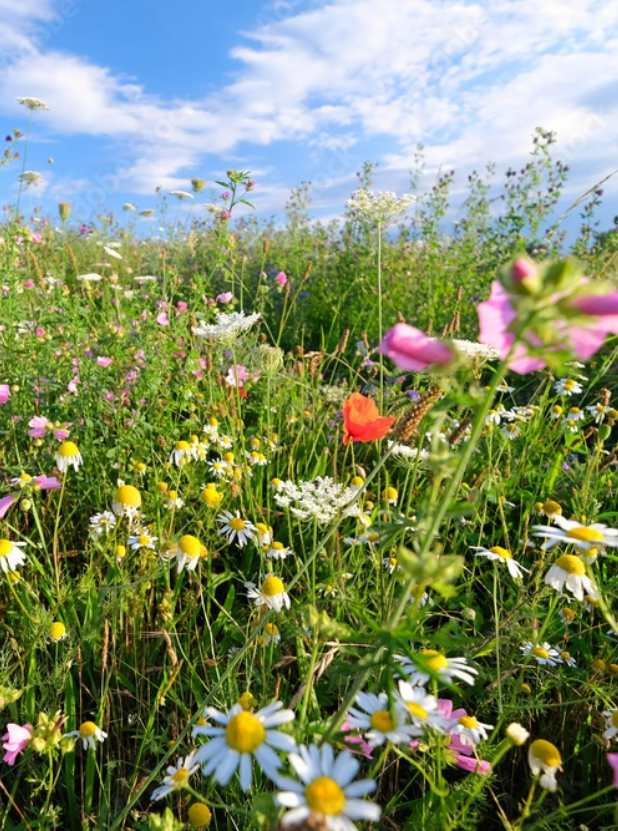
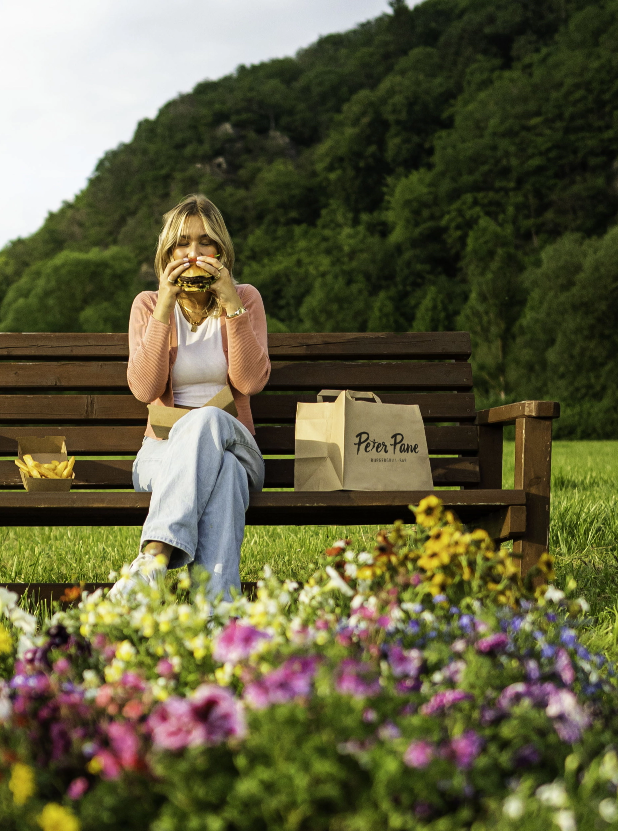
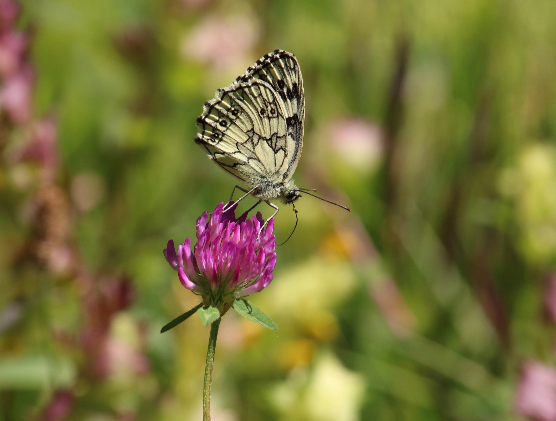
Flowering meadows full of life
15 different species of wild flowers grow in our huge flower meadows, including the rare meadow sage and the highly endangered cornflower, the meadow knapweed, as well as clover and common yarrow. We select the plants so that they suit the soil and climate of our areas in Mecklenburg-Western Pomerania. This allows a particularly rich biodiversity to settle: butterflies, wild bees, bumblebees, ladybirds and many important insect species find nectar, pollen and morning dew here during the flowering season. But small animals such as mice or endangered species such as the hare, skylark, partridge or Montagu’s harrier can also find protection and food in this valuable habitat.
Our flower meadows – more than just a feeding place
Of course, our wildflower meadows are most beautiful for all of us when they bloom in full splendor from spring to late autumn. Then there is a buzzing and humming noise because countless bumblebees, wild bees and insects pollinate the flowers in their search for pollen and nectar, thus stimulating the cycle of life. However, the meadows are valuable for nature all year round: the closed plant cover protects against drying out, roots loosen the soil and increase soil fertility, plant seeds provide food for birds and small animals, and insect larvae and songbirds overwinter here.
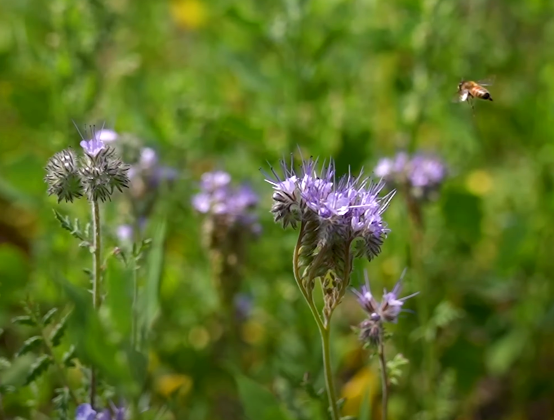
What you should know about our meadows
Bees, bumblebees, butterflies and other insects play a crucial role in many ecosystems and in people’s food supply. They pollinate most wild and cultivated plants by collecting nectar and pollen. This includes all fruit trees and many vegetable plants that can only bear fruit if their flowers have been pollinated beforehand. But this is not the only thing that makes the honey bee a vital farm animal for humans. Wild bees, along with a variety of other insects, also help with pollination and are also part of a complex food network that birds and other small animals need to survive. Biodiversity as we know it can only be preserved if we start at the bottom and offer protection to even the smallest.
Since the end of the 1980s, insect diversity in Germany has declined by 76 percent. In addition, more than half of all wild bee species are severely threatened or even on the verge of extinction. This is mainly due to the use of pesticides and very intensive agriculture, but also to the destruction of suitable habitats such as fallow land, old grass strips and flowering meadows. When there are fewer insects, there are fewer animals that feed on them. For example, the bird populations that need insects to raise their young are declining sharply. We love nature in all its diversity and want to create a future in which everyone has space. That is why we are doing our part to slow down the decline in wild bees and other insects. We sow special annual and perennial mixtures on our fields to ensure natural biodiversity.
The smallest of them is the tiny bee (4-5 mm), the largest is the blue-black carpenter bee (2.8 cm). Unfortunately, more than half of Germany's wild bee species are seriously threatened. We are therefore trying to create more and more flowering habitats that ensure their survival.
The oldest bee was found in 100 million year old amber in northern Myanmar. This suggests that bees originated in East Asia.
75% of our native wild bee species dig nesting tubes in earthy ground, such as sand or clay. Other species prefer to use plant stems or rotten wood. Even snail shells or cracks in walls can be used as nesting tubes.
